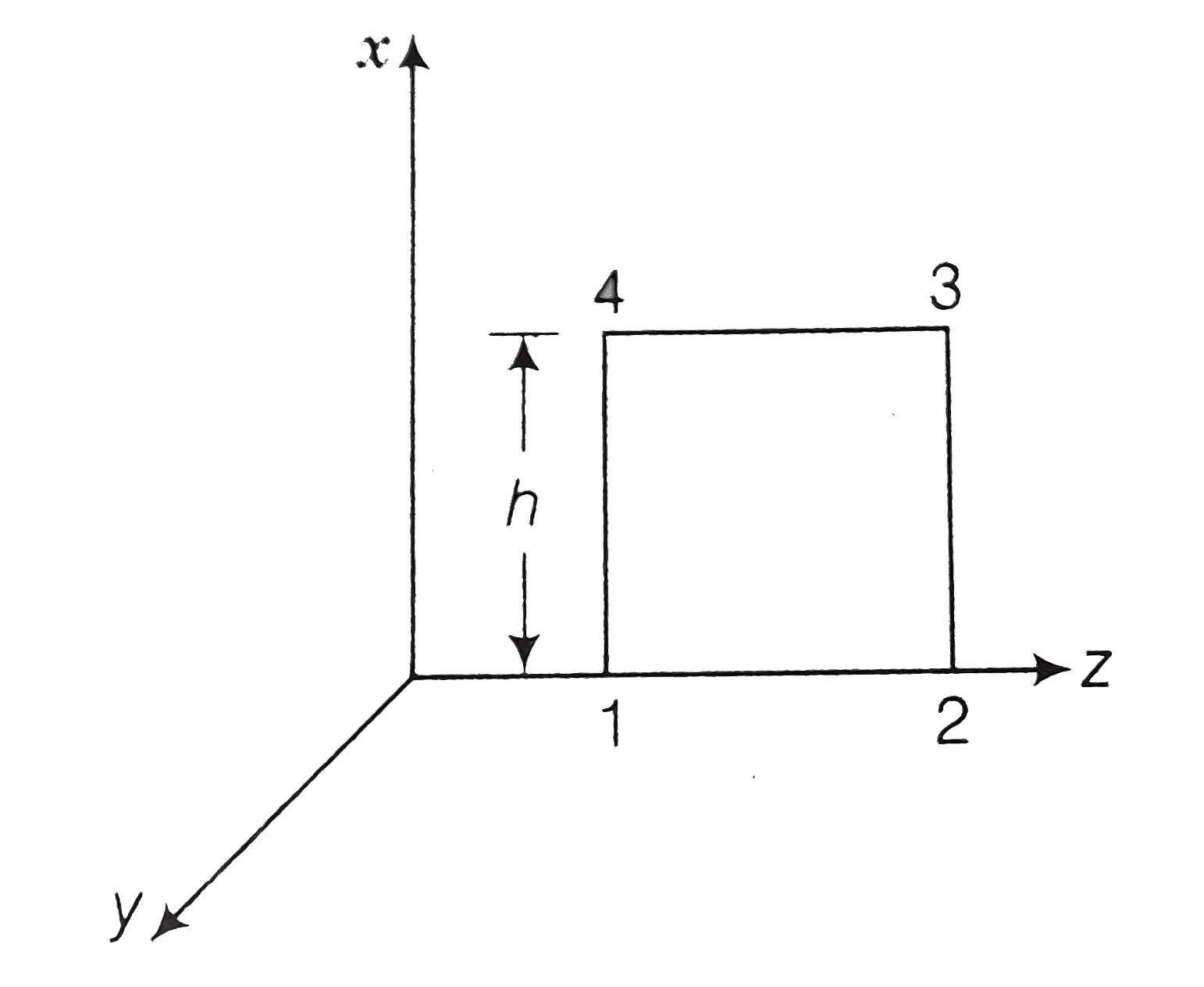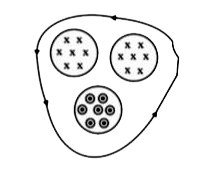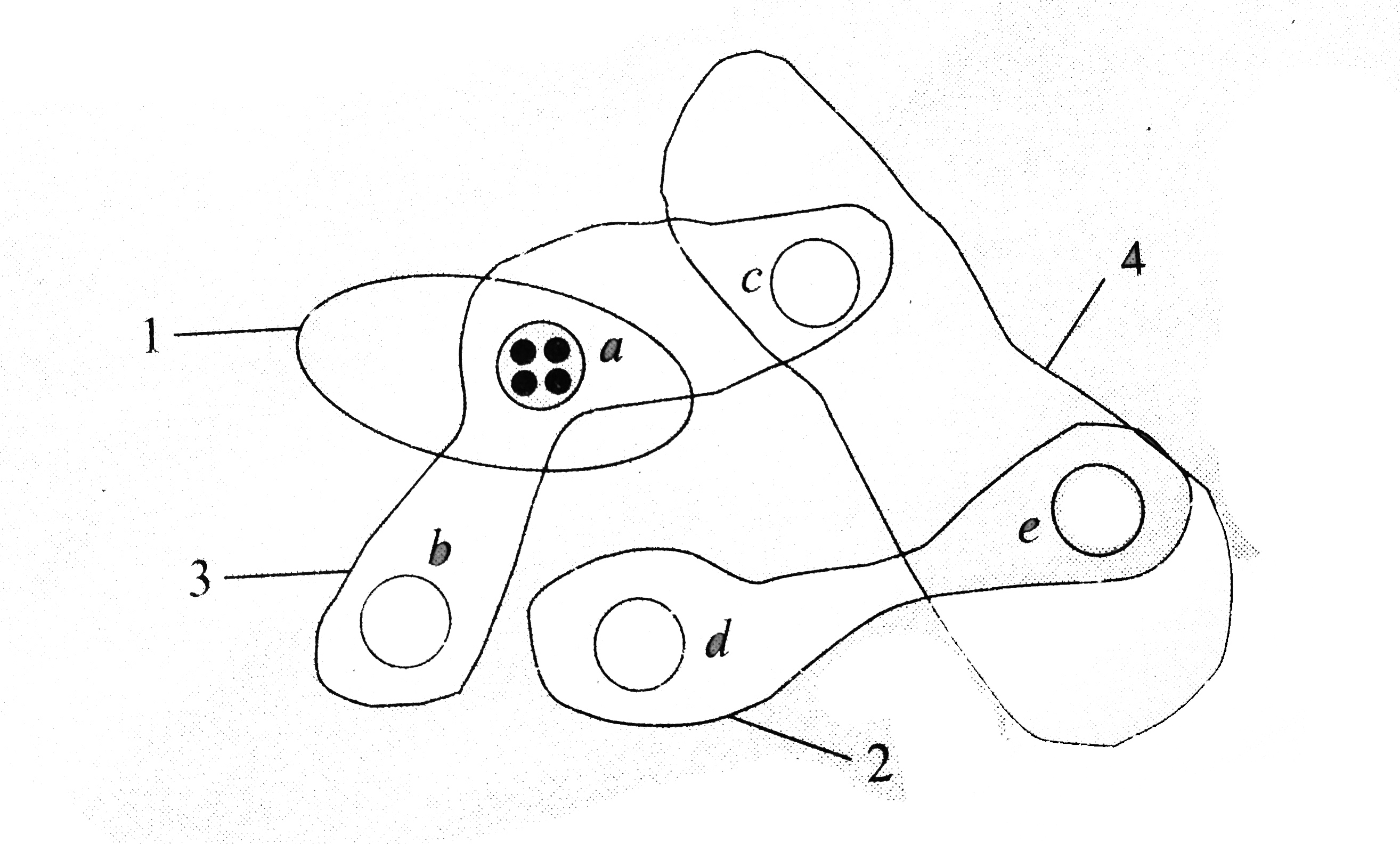If oint_s vecE.vec(ds)=0 over a surface, then :
the magnitude of electric field on the surface is constant.
all the charges must necessarily be inside the surface.
the electric field inside the surface is necessarily uniform.
the number of flux lines entering the surface must be equal to the number of flux leaving it.
To solve the problem, we need to analyze the given condition: the integral of the electric field →E dotted with the differential area vector →ds over a closed surface is equal to zero:
∮→E⋅→ds=0
1. Understanding the Integral: The expression ∮→E⋅→ds represents the total electric flux through a closed surface. The dot product indicates that we are considering the component of the electric field that is perpendicular to the surface.
2. Interpreting the Result: If the total electric flux through the closed surface is zero, it implies that the number of electric field lines entering the surface is equal to the number of electric field lines leaving the surface. This is a consequence of Gauss's law.
3. Applying Gauss's Law: According to Gauss's law, the electric flux through a closed surface is proportional to the charge enclosed within that surface:
ΦE=∮→E⋅→ds=Qencϵ0
where Qenc is the total charge enclosed by the surface and ϵ0 is the permittivity of free space.
4. Conclusion from Zero Flux: Since ∮→E⋅→ds=0, it follows that:
Qencϵ0=0
This implies that the total charge Qenc enclosed by the surface must be zero.
5. Implications: The result indicates that either there are no charges inside the surface or the positive and negative charges inside the surface balance each other out perfectly.
Final Answer:
If ∮→E⋅→ds=0 over a surface, then the total charge enclosed by the surface is zero.
ΦE=∮→E⋅→ds=Qencϵ0
where Qenc is the total charge enclosed by the surface and ϵ0 is the permittivity of free space.
Qencϵ0=0
This implies that the total charge Qenc enclosed by the surface must be zero.
If ∮→E⋅→ds=0 over a surface, then the total charge enclosed by the surface is zero.
Topper's Solved these Questions
Similar Questions
A plane EM wave travelling in vacuum along z-direction is given by E=E0 sin (kz−ωt)ˆi and B=B0 sin (kz−ωt)ˆj
(i) Evaluate ∫E.dl over the rectangular loop 1234 shown in figure.
(ii) Evaluate ∫B.ds over the surface bounded by loop 1234.
(iii) Use equation ∫E.dl=−dϕBdt to prove E0B0=c.
(iv) By using similar proces and the equation
∫B.dl=μ0I+ε0dϕEdt, prove that c1√μ0ε0

View SolutionExplain how Biot-Savart's law enables one to express the Ampere's circuital law in the integral form , viz.,
∮→B.→dl=μ0I
where I is the total current passing through the surface.
View Solution
Knowledge Check
If ∮sE.ds=0 Over a surface, then
Athe electric field inside the surface and on it is zeroBthe electric field inside the surface is necessarly uniformCthe number of flux lines entering the surface must be equal to the number of flux lines leaving itDall charges must necessarily be outside the surfaceSTATEMENT -1 : If ∮→E.¯¯¯¯ds over a closed surface is negative,it means the surface encloses a net negative charge.
STATEMENT-2 : We may have a Gaussian surface in which three lines enter and five field lines are coming out.
STATEMENT-3 : The quantity ∮→E.¯¯¯¯ds is independent of the charge distribution inside the surface.AT T TBF F TCF T FDT F F
As shown in the above figure, a loop surrounds three regions of the magnetic field where the magnitude of the magnetic field is decreasing at a constant rate a. Take the area of each region as A. Now find the
∮→E.→dl along the given loop, where →E is the induced electric field.AαAB−αAC3αAD−3αA
If for an Amperian loop ∮→B.→dl=0 does that mean →B=0 at every point on the Amperian loop ?
View SolutionThe suface integral of electrostatic field →E produced by any sources over any closed surface S enclosing a volume V in vacumm, i.e., total electric flux over the closed S in vacumm is 1/∈0 times the total charge (Q) contained inside S, i.e, ϕE=∮→E.→ds=Q∈0
The charge inside S may be point charges or even continous charge distributions.
There is no contribution to total electric flux from the charges outside S. Further, the location at Q inside S does not affect the value of surface integral.
Read the above passage and answer the following questions :
(i) what are the SI unit and dimensions of electric flux ?
(ii) A closed surface in vacumm encloses charge −q,+3qand+5q. Another charge +4q lies outside the surface. What is total electric flux over the surface ?
(iii) A point charge q lies inside a spherical of radius r. How will the electric flux be affected if radius of the sphere is doubled ?
(iv) What values of life do you earn from the theorem ?
View SolutionFigure shows five lettered regions in which a uniform magnetic field extends directly either out of the page (as in region a) or into he page. The field is increasing in magnitude at the same steady rate in all five regions, the regions are identical in area. Also shows are four numbered paths along which ∮→E.→dl has the magnitudes given below in terms of a quantity mag. Determine whether the magnetic fields in regions b through e are directed into ot out of the page.
 ?
?
∣∣ ∣∣Path1234∮→E.→dlmag2(mag)3(mag)0∣∣ ∣∣
View SolutionFor a given surface the Gauss's law is stated as∮→E.d→A=0. From this we can conclude that
View SolutionThe maxwells four equations are written as
i. ∮→E.−→dS=qε0
ii.∮→B.−→dS=0
iii. ∮→E.→dl=ddt∮→B.−→dS
iv. ∮→B.→dl=μ0εddt∮→E.−→dS
The equations which have sources of →E and →B are
View Solution
